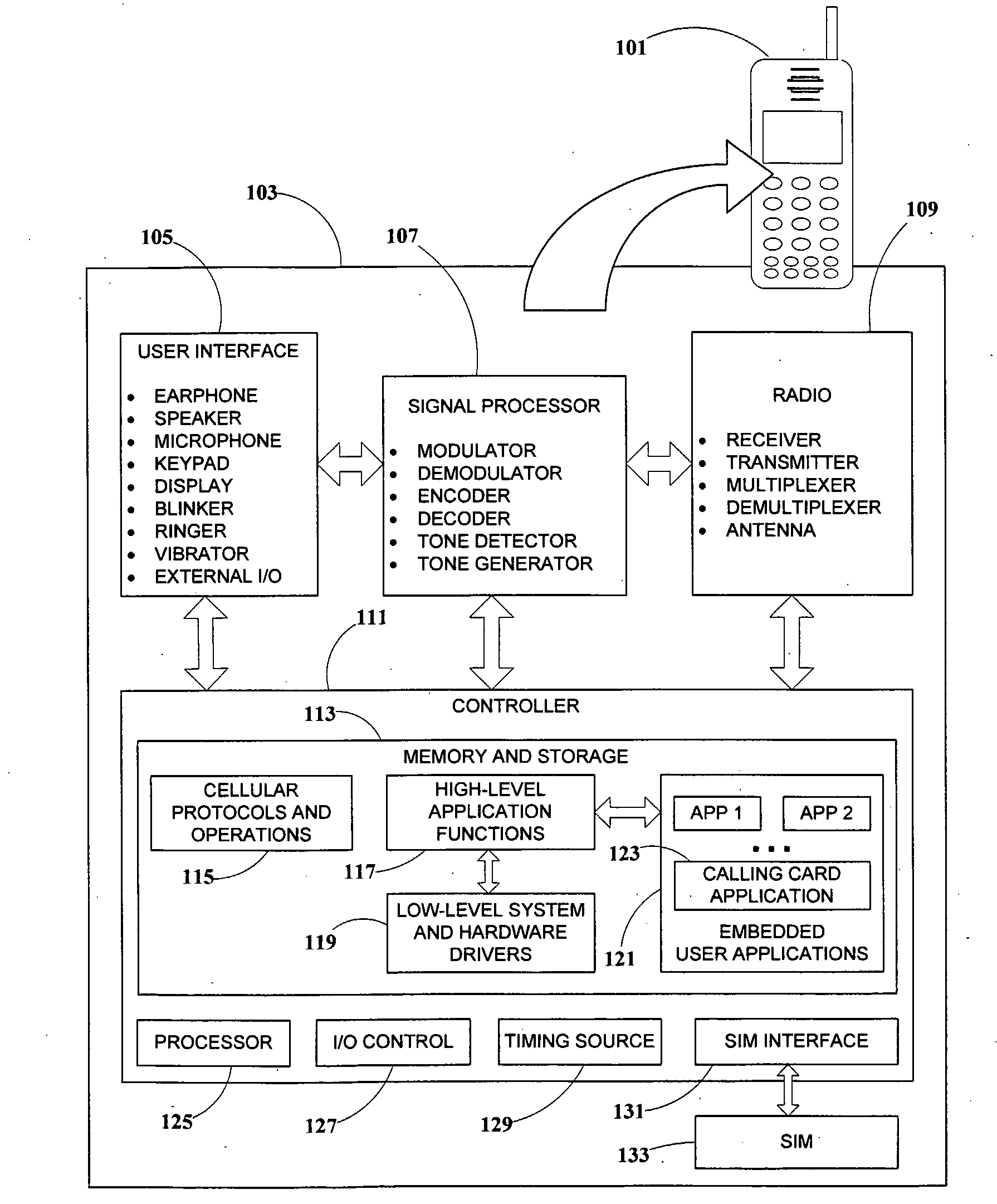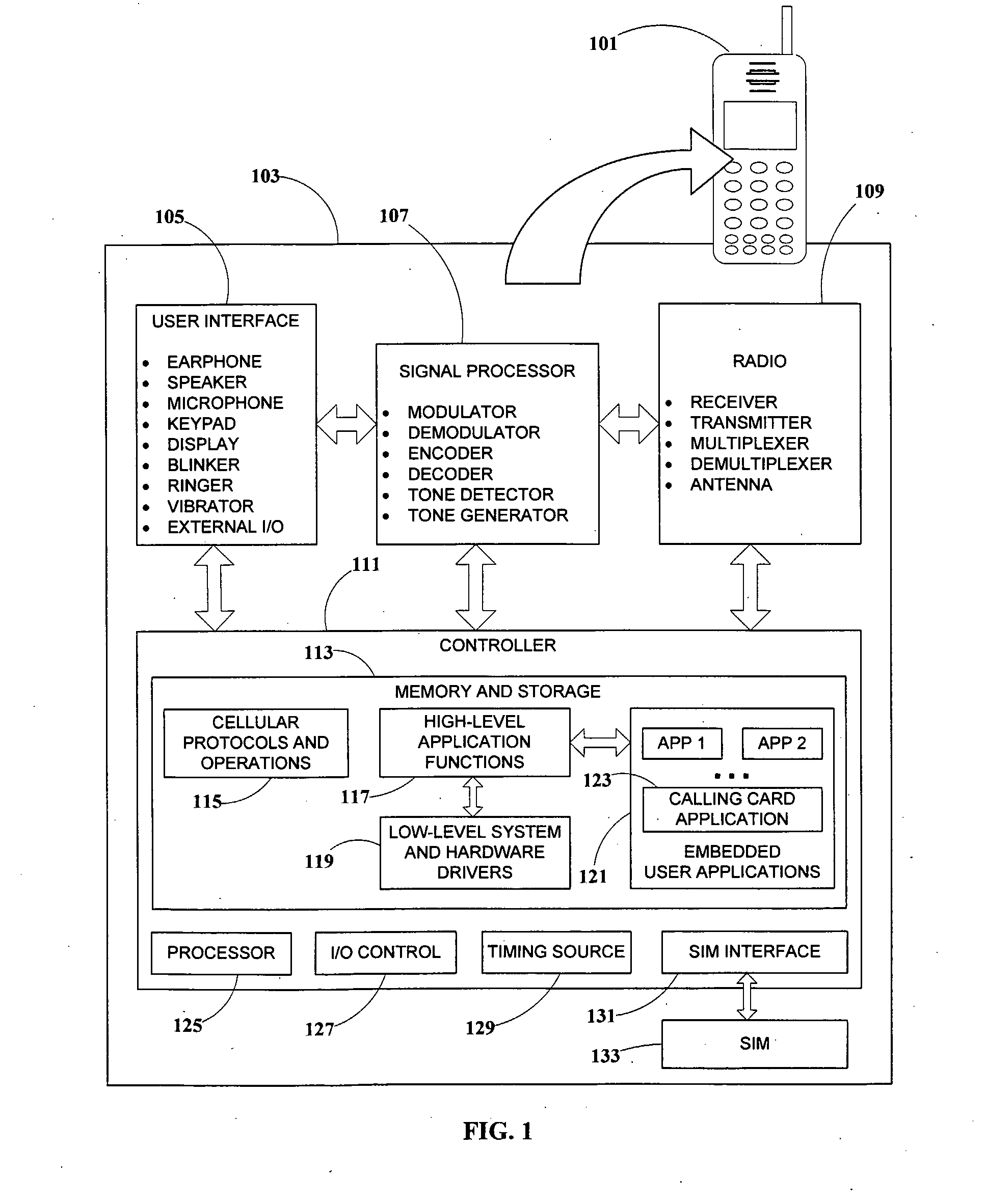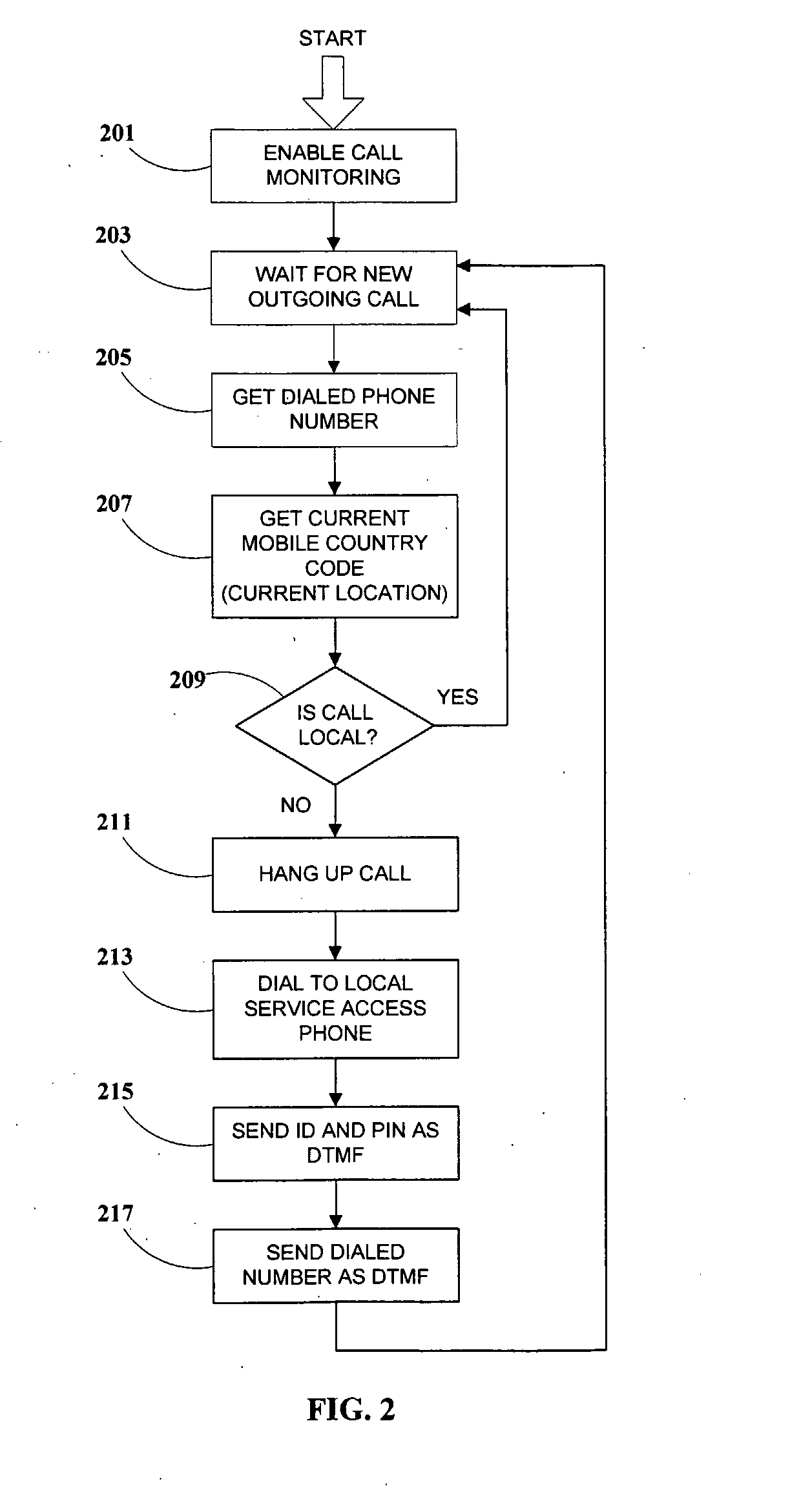System for Optimizing Cellular Telephone Call Placement With Minimal User Overhead
- Summary
- Abstract
- Description
- Claims
- Application Information
AI Technical Summary
Benefits of technology
Problems solved by technology
Method used
Image
Examples
Embodiment Construction
[0051]The principles and operation of a system and method for placing mobile telephone calls according to the present invention may be understood with reference to the drawings and the accompanying description.
Prior Art Calling Card Support and the Limitations Thereof
[0052]To appreciate the novel advances of the present invention for the support of calling cards and call-back programs, it is helpful to first review the prior art implementation
[0053]FIG. 1 is a functional block diagram of a prior art mobile telephone 101 with embedded capabilities for handling the placement of calls via calling cards, such as described in Ericsson and in Alanara. Internal functions block 103 includes a user interface 105, a signal processor 107, a radio 109, a controller 111, and an optional SIM 133. Controller 111 contains the following functional units: a processor 125, an I / O control 127, a timing source 129, an optional SIM interface 131 for optional SIM 133, and a memory and storage 113 for data...
PUM
 Login to View More
Login to View More Abstract
Description
Claims
Application Information
 Login to View More
Login to View More - R&D
- Intellectual Property
- Life Sciences
- Materials
- Tech Scout
- Unparalleled Data Quality
- Higher Quality Content
- 60% Fewer Hallucinations
Browse by: Latest US Patents, China's latest patents, Technical Efficacy Thesaurus, Application Domain, Technology Topic, Popular Technical Reports.
© 2025 PatSnap. All rights reserved.Legal|Privacy policy|Modern Slavery Act Transparency Statement|Sitemap|About US| Contact US: help@patsnap.com



